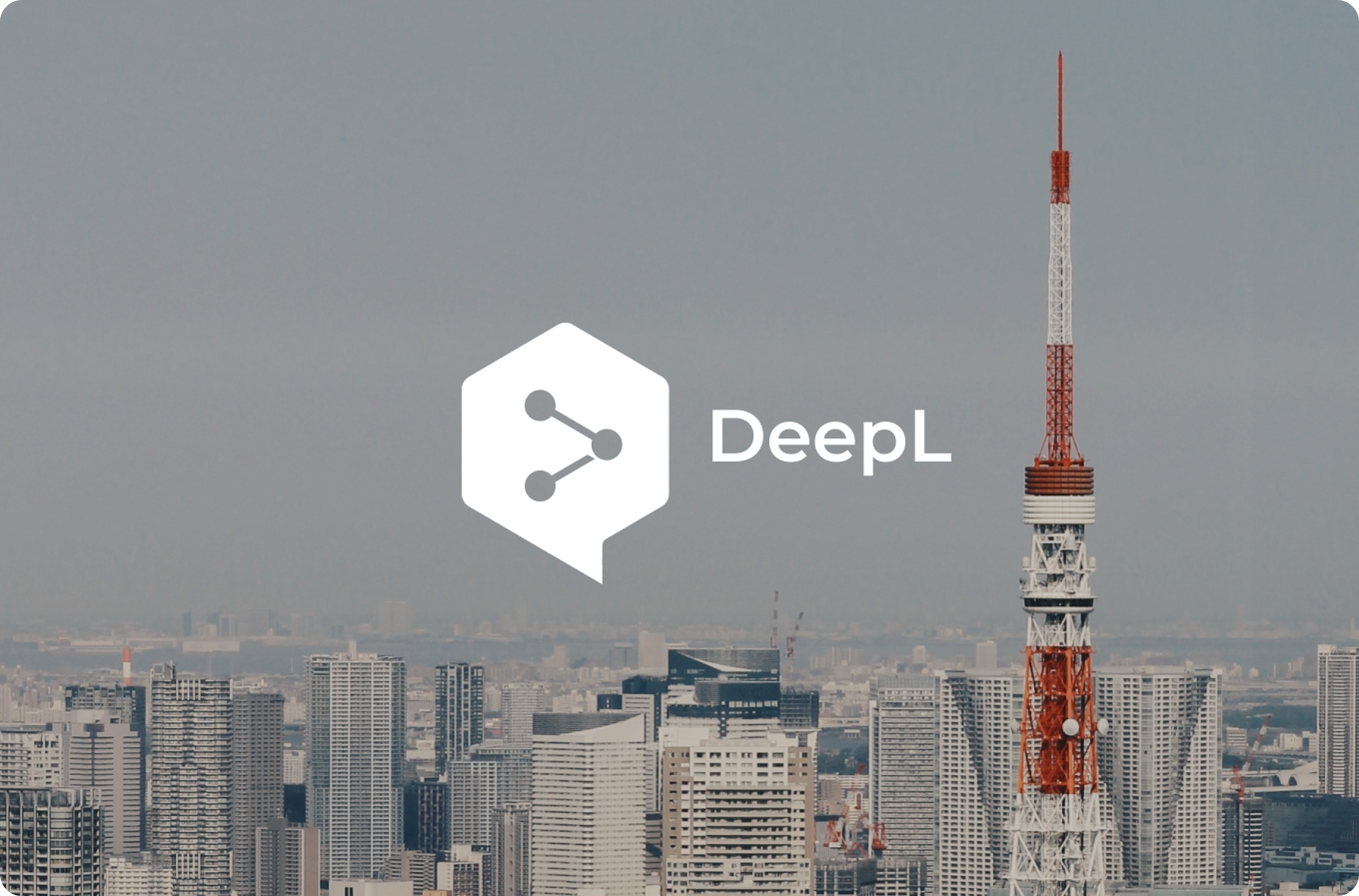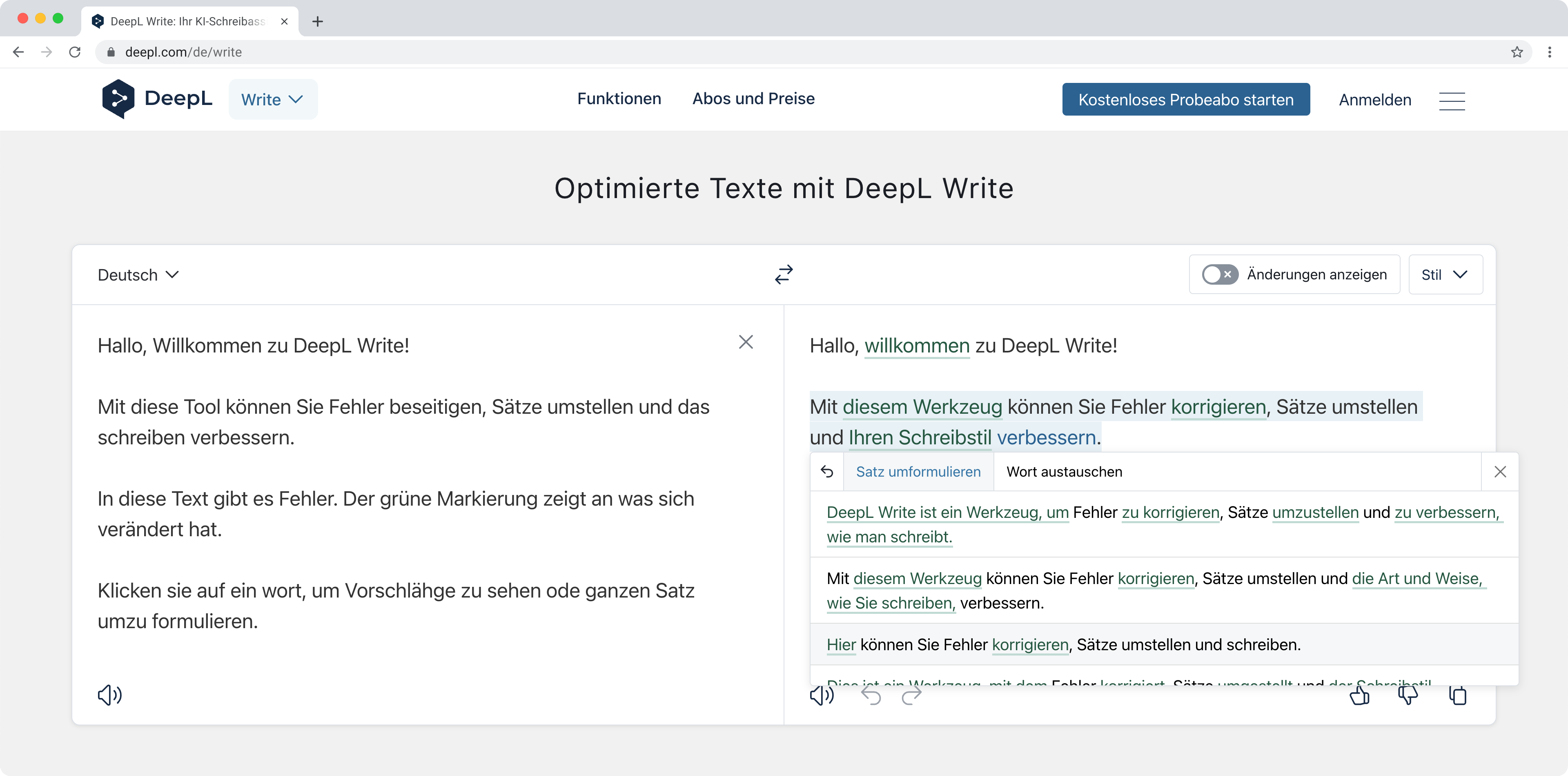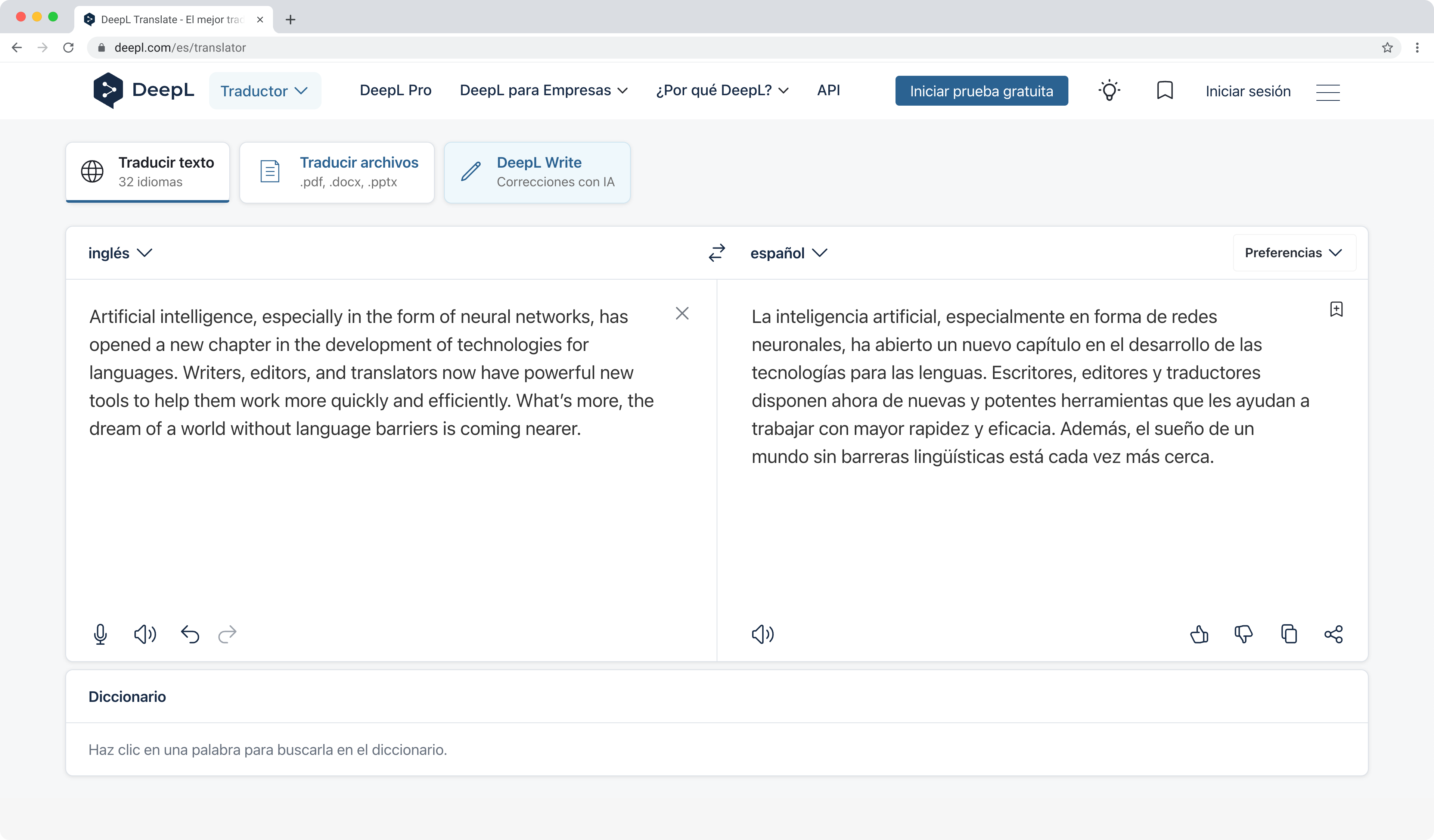What is DeepL? Everything we know about the best AI translation service
DeepL is one of the best AI translation tools on the market

DeepL is an AI-powered translation tool known for its exceptional accuracy and nuanced translations. Using deep learning and neural networks, it provides more natural-sounding translations than many competitors like Google Translate, making it a go-to choice for businesses, researchers, and individuals.
Unlike basic machine translation services, DeepL analyses entire sentences to preserve context and meaning, and is particularly useful for translating professional documents, academic papers, and multilingual communications while maintaining formatting and ensuring industry-specific terminology remains consistent.
This article was correct as of February 2025. AI tools are updated regularly and it is possible that some features have changed since this article was written. Some features may also only be available in certain countries.
- Try out DeepL
- We've rounded up the best AI tools – ChatGPT, DeepL, Midjourney, and more
What is DeepL?
DeepL was launched in 2017 in Cologne by CEO and founder Jarek Kutylowski.
Based in Germany, it uses neural machine translation (NMT) models trained on extensive datasets to produce high-quality, context-aware translations. Unlike rule-based or phrase-based translators, DeepL processes entire sentences to improve fluency and accuracy.
The service currently supports over 30 languages, including English, Spanish, German, French, and Chinese, and plans to add more in the future.
One of DeepL’s standout features is its document translation tool, which maintains the formatting of Word, PDF, and PowerPoint files.
Sign up to the TechRadar Pro newsletter to get all the top news, opinion, features and guidance your business needs to succeed!
The platform also includes a glossary feature that allows users to define preferred translations for specific terms. Businesses can integrate DeepL into their workflow using its API, enabling automated translations within apps, customer support systems, and enterprise software.

What can you use DeepL for?
DeepL is used for professional and personal translation needs. It’s particularly popular in business environments where accurate translations of contracts, reports, and emails are essential.
Academic researchers use it to translate papers and studies, while individuals rely on it for travel, communication, and learning new languages. DeepL’s document translation tool is especially valuable for companies handling multilingual content, as it maintains the original structure of PDFs, Word files, and PowerPoint presentations.
The platform’s glossary feature enables users to customise translations by specifying preferred terminology, ensuring consistency across technical or industry-specific texts.
What can’t you use DeepL for?
DeepL does not support real-time spoken translation, making it unsuitable for live conversations or meetings.
Unlike tools such as Google Translate, it lacks extensive language coverage, and while its AI model excels in written translation, it may struggle with idioms or highly informal language, leading to less natural phrasing in casual contexts.
Additionally, the free version has limitations on text length, meaning users handling large volumes of content may need to upgrade to a paid plan.
How much does DeepL cost?
DeepL offers a free version with a character limit of 1,500 per translation.
DeepL Pro is available in multiple pricing tiers, starting at around €8.99 per month, depending on usage. The Pro plan removes character limits, provides better data privacy, and allows document translation without restrictions.
Businesses can access DeepL’s API through subscription-based pricing, with costs varying based on the number of characters translated per month. Higher-tier plans offer advanced features like multiple user accounts and integration into third-party applications.
Where can you use DeepL?
DeepL is accessible via its web-based translator and dedicated desktop applications for Windows and macOS, and also offers mobile apps for iOS and Android.
Additionally, browser extensions allow users to translate text directly within web pages, and the DeepL API can be integrated into software for automated translation workflows.

Is DeepL any good?
DeepL is widely regarded as one of the most accurate AI-powered translation tools available. While TechRadar has not reviewed it, other users and reviewers praise its natural phrasing, contextual understanding, and ability to preserve document formatting.
Many users find it superior to Google Translate for European languages, as it delivers more fluent and idiomatic results.
However, its main drawbacks include a smaller language selection than competitors and the absence of voice translation. Businesses appreciate its API and professional features, while individuals value its free translation tool.
If you need high-quality written translations, DeepL is a strong option, especially for business and academic use.
Use DeepL if...
DeepL is an excellent choice for those who need highly accurate, natural-sounding translations, while businesses benefit from its ability to translate professional documents while maintaining formatting, making it ideal for contracts, reports, and presentations.
Its glossary feature ensures consistency in technical or industry-specific terminology. Consumers will find it useful for translating personal documents, academic papers, or multilingual communication.
Don’t use DeepL if...
DeepL is not the best option for those who need real-time spoken translation, as it does not support live conversations or voice input. Enterprise customers looking for broader language coverage may find its selection too limited compared to Google Translate.
Consumers who need a completely free service without character limits might prefer other alternatives. Additionally, if you require AI-powered voice translation for hands-free assistance, DeepL does not currently offer voice-to-text or speech recognition features.
Also consider
If DeepL doesn’t meet your needs, several alternative translation tools offer comparable features. Google Translate supports over 130 languages and includes real-time voice translation, making it a better choice for spoken conversations.
Microsoft Translator is a strong option for business users, integrating seamlessly with Microsoft Office and Teams for multilingual collaboration.
For professional document translation, SYSTRAN provides enterprise-level solutions with advanced customisation options tailored to industry-specific language requirements.
Want to read more about DeepL?
Max Slater-Robins has been writing about technology for nearly a decade at various outlets, covering the rise of the technology giants, trends in enterprise and SaaS companies, and much more besides. Originally from Suffolk, he currently lives in London and likes a good night out and walks in the countryside.
You must confirm your public display name before commenting
Please logout and then login again, you will then be prompted to enter your display name.